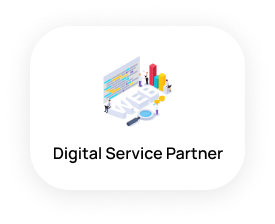What is Web Design Process?
Web design process is the set of steps that a person or team takes to create a website. It can encompass a variety of different activities, from gathering user feedback to designing the overall structure and layout of the website. There is no definitive process for creating a web design, as the process depends on the project’s specific needs.
What are the 8 phases of the Web Design Process?
1. Discovery
This initial phase sets the foundation for the entire project. It involves comprehensive discussions with the client to understand their goals, target audience, brand identity, and competition. Through research and analysis, designers gain valuable insights that inform subsequent decisions.
2. Strategy
Armed with insights from the discovery phase, designers develop a comprehensive strategy that outlines the project scope, timeline, budget, and deliverables. Additionally, they define the site architecture, user personas, and content strategy to ensure alignment with the client’s objectives.
3. Planning
Planning involves translating the strategic vision into a concrete plan of action. Designers create wireframes and sitemaps to visualize the site’s structure and functionality. Content planning also takes center stage, outlining the type of content needed and its placement within the website.
4. Design
This phase is where creativity flourishes. Designers craft mockups and prototypes that capture the aesthetic essence of the website while prioritizing user experience. From color schemes and typography to imagery and branding elements, every aspect is meticulously designed to resonate with the target audience.
5. Content Creation
Compelling content is the lifeblood of any website. In this phase, content writers and creators produce engaging copy, visuals, and multimedia assets that effectively communicate the brand’s message and engage visitors. Content is optimized for search engines to enhance discoverability.
6. Development
With designs approved and content ready, developers take the reins to bring the website to life. They utilize coding languages such as HTML, CSS, and JavaScript to build the site’s framework, implement functionality, and ensure responsiveness across various devices and browsers.
7. Testing and Review
Rigorous testing is conducted to identify and rectify any bugs, usability issues, or performance bottlenecks. Designers, developers, and clients collaborate to review the website’s functionality, design elements, and content, ensuring alignment with the project objectives and user expectations.
8. Launch and Maintenance
The culmination of the web design process is the launch of the website. Once all aspects are thoroughly tested and approved, the site goes live for the world to see. However, the journey doesn’t end here. Continuous monitoring, updates, and maintenance are essential to keep the website secure, functional, and relevant in the ever-evolving digital landscape.
How can you improve your Web Design Process?
- Work Together: Keep communication open with clients all the way through. Their feedback helps guide the process and makes sure everyone’s on the same page.
- Think About Users: Design with your audience in mind. Understanding what they want and need makes for better websites.
- Fit for All Devices: Make sure your designs look good and work well on phones, tablets, and computers. No one likes a website that looks weird on their device!
- Keep Things Moving: Find ways to work smarter, not harder. Use tools to help organize tasks and keep track of what needs to be done.
- Make It Better Over Time: Don’t think of design as a one-time thing. Keep tweaking and improving based on feedback and what you learn along the way.
- Everyone Should Use It: Design websites so that everyone, including people with disabilities, can use them easily.
- Speed Matters: Nobody likes waiting forever for a website to load. Keep things fast by using the right tools and techniques.
- Keep Learning: Stay up-to-date with what’s new in web design. Trying out new ideas and learning from mistakes helps you grow.
- Work Together as a Team: Share ideas and learn from each other. Working as a team makes everything go smoother.
- Learn from Your Mistakes: After a project, take some time to think about what went well and what didn’t. Learning from mistakes helps you do better next time.
What are some common Web Design Mistakes?
What are some common web design mistakes? Some common web design mistakes include:
A. Using a template or prefabricated web design elements.
B. Using low-quality or outdated software.
C. Creating a site that is difficult to navigate.
D. Using poor typography.
E. Failing to properly test.
What are some tips for streamlining the Web Design Process?
- Prioritise what needs to be done and figure out what’s the most important.
- Define the project’s objectives and ensure all goals are met.
- Choose the right tools and software to help speed up the process.
Common accessibility issues to consider when designing
- Make sure all text is readable and large enough for people with vision and mobility impairments.
- Ensuring all images are large and clear for people with vision and mobility impairments.
- Making sure all forms and links are accessible, including contact information and pricing.
Start your Website Design now!
If you want help in your website design process, Ubique Digital Solutions is here to help. UDS offers website design services for small and big businesses. Get the best out of your website design. Contact us today.
















